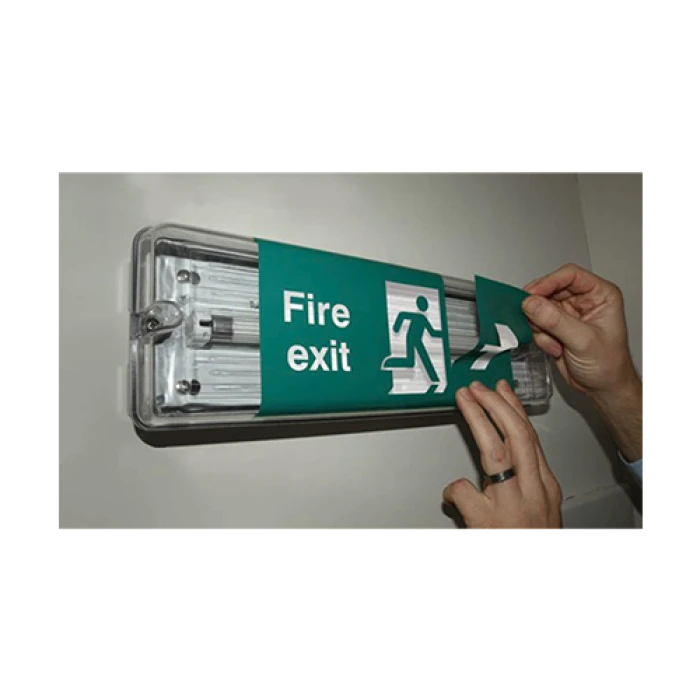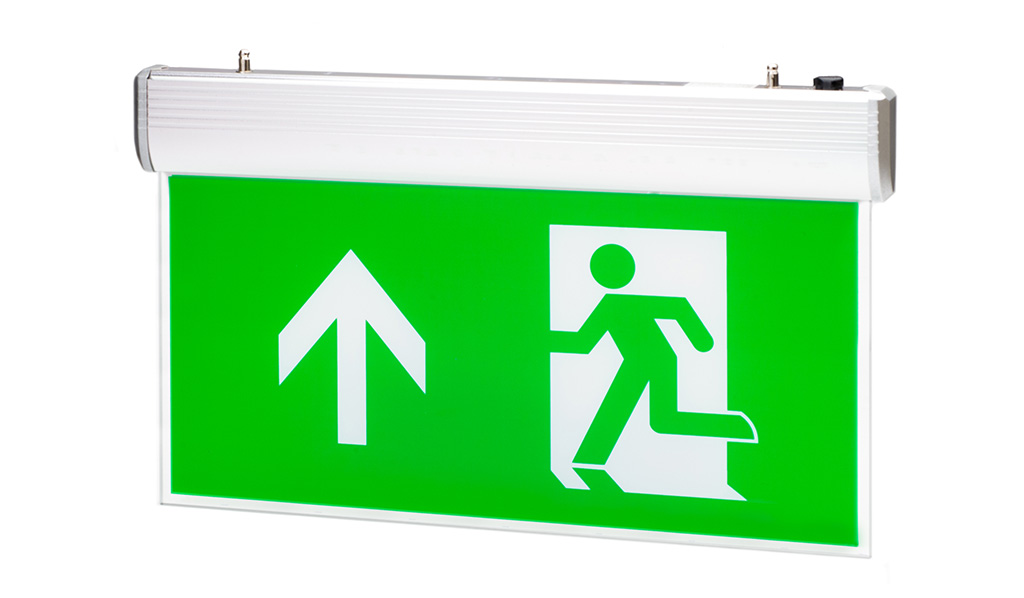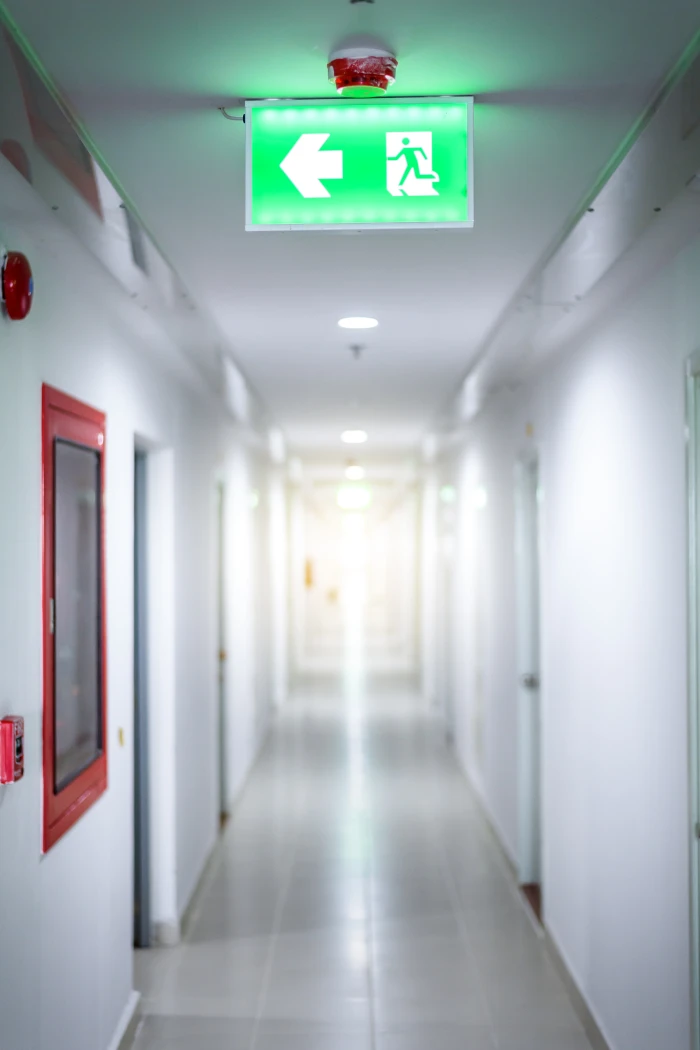
Need assistance?
Need Assistance? Call Us 0330 058 0631





















 Book a service
Book a service

30/07/2024 • by Lynsey B

In this post, we focus on the critical importance of emergency lighting during fire emergencies. Effective emergency lighting, including options like the dependable bulkhead emergency light, is essential for guiding occupants to safety and ensuring visibility in smoke-filled or darkened areas. Join us as we delve into when and why emergency lighting is necessary to safeguard lives during fire emergencies.
Emergency lighting is a vital safety feature designed to provide illumination when the main power supply is disrupted. This typically happens during emergencies such as fires, power outages, or other critical situations.
Emergency lighting ensures that exits, corridors, stairways, and other essential areas remain visible, allowing occupants to safely evacuate the premises. Emergency lighting systems often include a variety of fixtures, such as bulkhead emergency lights, which are specifically designed to operate efficiently and reliably in these scenarios. These systems are not only crucial for guiding people to safety but are also used for aiding first responders in their operations. Proper installation and maintenance of emergency lighting are mandated by British Standards to ensure that these systems function correctly when needed most.
-(1080-x-790-px)-(10).jpg)
Determining the necessity of emergency lighting hinges on several factors, primarily the nature of the building and its occupancy. In essence, any building that is accessible to the public or utilised for work, leisure, or residential purposes mandates some form of emergency lighting. This necessity stems from the paramount need to ensure the safety of everyone within the building in the event of power outages, fires, or other emergencies. The presence of emergency lighting systems, including devices like emergency bulkhead lights, plays a critical role in guiding occupants to safety by illuminating escape routes and exits.
In the UK, several types of buildings typically require emergency lighting due to their inherent risks and the potential consequences of an emergency. Commercial buildings, such as offices, shops, and factories, are prime examples. These buildings often accommodate numerous employees and visitors who must be able to evacuate safely and quickly if the need arises. The installation of emergency lighting ensures that even in the case of a sudden power failure, individuals can navigate their way to safety without chaos or confusion.
Public buildings, including schools, hospitals, and museums, are another category where emergency lighting is indispensable. These buildings serve large populations, including children, patients, and the general public, who may not be familiar with the building layout. In such environments, the importance of emergency lighting is magnified as it ensures that everyone, including those who are most vulnerable, can be safely evacuated. Hospitals, in particular, require robust emergency lighting systems to ensure that medical services can continue and patients can be safely moved if necessary.
Multi-storey residential buildings also fall under the category of structures that require emergency lighting. These buildings house numerous residents, often across multiple floors, making it essential to have reliable illumination in stairwells, corridors, and communal areas. Emergency lighting, such as bulkhead emergency lights, ensures that residents can find their way out during a power outage or fire, reducing the risk of injury or panic.
Hotels and guest houses cater to transient populations who are unfamiliar with the building layout, making emergency lighting highly important. In the event of an emergency, guests must be able to locate exits and escape routes quickly. The presence of emergency lighting provides reassurance and clear guidance, enhancing overall safety and potentially saving lives.
Entertainment venues, such as theatres, cinemas, and sports facilities, are designed to accommodate large numbers of people in relatively confined spaces. These settings require robust emergency lighting systems to ensure that, in the event of an emergency, patrons can exit the building in an orderly and efficient manner. The use of emergency bulkhead lights in these venues is particularly important as they provide consistent and reliable illumination, even in the most challenging conditions.
Emergency escape lighting is essential in various parts of a building, particularly in areas vital for safe evacuation during emergencies.
One of the primary locations requiring such lighting is escape routes. These include corridors, staircases, and other designated pathways that lead to exits. Ensuring that these routes are adequately illuminated is important for guiding occupants out of the building safely and efficiently, especially during power failures or emergencies when visibility might be severely compromised.

High-risk task areas are another vital location for emergency escape lighting. These are places where hazardous tasks are performed, such as laboratories, industrial workshops, or areas with heavy machinery. In these environments, the presence of emergency lighting is not only about guiding people to exits but also about ensuring that these hazardous processes can be safely shut down to prevent further danger. The robust illumination provided by emergency lighting systems helps workers perform essential shutdown procedures, minimising risks associated with sudden power losses.
In large open areas, such as auditoriums, exhibition halls, or shopping centres, the need for anti-panic lighting becomes apparent. These spaces can accommodate many people, and in the event of an emergency, poor lighting can lead to panic and confusion. Adequate emergency lighting in these areas helps prevent panic by providing sufficient illumination, enabling occupants to see and follow directions towards exits calmly.
Furthermore, fire equipment locations within a building must also be well-lit. These areas house essential fire-fighting equipment, such as extinguishers, hoses, and alarm call points. During an emergency, it is imperative that these resources can be easily located and accessed. Emergency lighting ensures that these areas are clearly visible, allowing occupants or fire safety personnel to use the equipment effectively. Reliable illumination in these spots can make a significant difference in the early stages of an emergency, potentially preventing the situation from escalating.

In the UK, the installation and maintenance of emergency lighting systems are governed by stringent regulations and standards. These guidelines are in place to ensure that emergency lighting systems are not only installed correctly but also remain reliable and effective when needed most. The primary standards and regulations that guide the installation and upkeep of these systems include BS 5266-1, The Regulatory Reform (Fire Safety) Order 2005, and BS EN 1838.
BS 5266-1 is a British Standard that offers comprehensive guidance on the design, installation, and maintenance of emergency lighting systems. This standard ensures that emergency lighting is adequate for safe evacuation by specifying the appropriate lighting levels and duration. It covers various types of emergency lighting, including emergency escape lighting and standby lighting.
The Regulatory Reform (Fire Safety) Order 2005 is another regulation that impacts emergency lighting in the UK. This legislation requires that all emergency routes and exits be adequately illuminated in the event of a power failure. It places the responsibility on the 'responsible person'—typically the building owner or manager—to ensure that emergency lighting systems are installed and maintained in compliance with the law. This regulation is designed to protect building occupants by ensuring that emergency lighting systems are functional and effective. Failure to comply with The Regulatory Reform (Fire Safety) Order 2005 can result in legal consequences and significantly increased risks to building occupants.
BS EN 1838 is a European Standard that specifies the requirements for emergency lighting systems. It focuses on performance criteria for emergency escape lighting and standby lighting. This standard outlines the necessary illumination levels, duration, and positioning of emergency lights to ensure optimal performance during an emergency. BS EN 1838 complements BS 5266-1 by providing detailed technical specifications that ensure emergency lighting systems meet the required safety standards.
Regular testing and maintenance of emergency lighting systems are essential to ensure their reliability and functionality during an emergency. In the UK, the frequency and procedures for testing these systems are outlined in BS 5266-1, a standard that provides detailed guidance on emergency lighting practices.
Monthly tests are an important part of maintaining an emergency lighting system. These tests involve a brief functional check to ensure that all lights are operating correctly. This process typically involves pressing a test button on each emergency lighting unit. In turn, this simulates a power failure and confirms that the emergency light activates as it should. This quick monthly check helps identify any immediate issues, such as burnt-out bulbs or battery failures.
Annual tests are more comprehensive and involve operating the emergency lighting system for its full rated duration, which is usually three hours. During this test, the building's main power supply is disconnected to simulate a real power outage, allowing the emergency lighting system to run entirely on its battery backup. This extended test verifies that the system can provide continuous illumination for the required duration, ensuring that occupants will have sufficient light to evacuate safely during a prolonged emergency. The annual test also checks the overall health of the batteries and other system components, ensuring they can perform as needed when the time comes.
For more detailed guidance on testing procedures and schedules, building owners and managers can trust professional such as OHEAP, to help them with their emergency lighting testing.

Emergency lighting luminaires are specialised light fixtures designed explicitly for use in emergency lighting systems. These luminaires are integral to ensuring that buildings have comprehensive and effective illumination during power outages or other emergency situations. They come in various forms, each serving distinct purposes to cover different needs within a building.
One of the most common types of emergency lighting luminaires is the emergency bulkhead light. Known for its robustness, the emergency bulkhead light is often installed in corridors, stairwells, and external areas. These luminaires are built to withstand harsh conditions, including impacts and weather changes, ensuring that they provide reliable illumination when it is most needed.
Emergency exit signs are another type of emergency lighting luminaire. These signs are specifically designed to be highly visible and to clearly indicate the location of emergency exits. In the event of an emergency, illuminated exit signs are essential for guiding occupants towards safety, especially in large or complex buildings where finding an exit might be challenging. These signs often feature bright colours and symbols to ensure they can be easily seen and understood, even in low visibility conditions caused by smoke or darkness.
Recessed emergency lights offer a more discreet form of emergency illumination. These lights are installed within ceilings or walls, providing necessary lighting without disrupting the aesthetic of the space. Recessed emergency lights are particularly useful in environments where maintaining a clean and unobtrusive appearance is important, such as in offices, hotels, or modern residential buildings. Despite their subtle presence, these lights are powerful enough to ensure that key areas remain well-lit during an emergency, supporting safe evacuation.
Surface-mounted emergency lights, on the other hand, are more visible fixtures mounted directly onto surfaces such as walls or ceilings. These lights are designed to provide wide-area illumination, ensuring that larger spaces or open areas receive adequate lighting during an emergency. Surface-mounted lights are typically used in places like warehouses, industrial settings, and large public areas where comprehensive lighting coverage is essential to prevent panic and facilitate orderly evacuation.
.jpg)
Emergency lighting systems are crucial for ensuring safety in buildings during power outages or other emergencies, and they can be categorised into maintained and non-maintained systems based on their mode of operation.
Maintained emergency lighting systems are designed to be operational at all times. These lights function as part of the normal lighting system, providing continuous illumination during regular conditions. In the event of a power failure, these lights switch seamlessly to battery power, ensuring that there is no interruption in lighting. This type of system is particularly useful in environments where a constant level of low-level lighting is necessary, even during regular operation. Cinemas, theatres, and other entertainment venues often utilise maintained emergency lighting because these settings require a dim ambient light to guide patrons safely to their seats without disrupting the overall viewing experience.
Non-maintained emergency lighting systems, on the other hand, are designed to activate only during power failures. These lights remain off under normal conditions and are triggered to switch on automatically when the main power supply is interrupted. This type of system is commonly used in workplaces, public buildings, and areas where emergency lighting is only necessary during an actual emergency. Non-maintained systems are beneficial because they are energy-efficient, as they do not consume power during regular operations.
We use cookies to enhance your site experience. Choose your preferences below.
